19 years ago
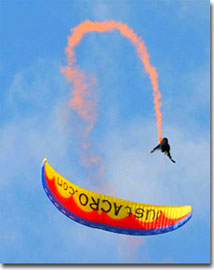
Description:
The Wing-Over is a series of dynamic turns, whilst the pilot swings „over the wing”. It’s the base of the whole acro paragliding, but also a pretty difficult manouvres to learn (especially because you just start acro when you try the first Wing-Overs). The key of this trick is the perfect timing of weight shifting and braking.
Preparation:
Open the chest strap of your harness as much as possible to make it more sensible for weight shifting. Take one wrap on both side if the brakelines are long.
Enter:
Start a fast turn to the left by weight shifting and braking. Just after you starts to dive, release the brake, shift your weight to the right, and pull the right brake when you are at the lowest point. Now as the glider roll to the other side, you swing up and the canopy will be in front of you. Brake the glider by both brakes at the highest point to prevent collapse on the upper side of the wing. Once you start to dive again, release the brakes, shift your weight to the left and pull the left brake on the lowest point. Don’t forget the braking on the upper death point! As you continue this movement you will swing up higher and higher.
Advanved technique:
Complete your turns (do more than 180 degrees turns) to get a closed „8” figure movement instead of a series of „S” turns. If your technique is right and you have enough energy, you don’t have to brake the glider at the highest point anymore, just like in a well done Looping. Note that to be able to leave the braking at all you need a pretty dynamic glider and good technique.
If I want to built up the Wing Over faster, I always start with a short Spin. Pull down the brake pretty hard immediately, until the glider starts to spin. After it turned about 45-90 degrees, release the brake and control the following surge. As you swing back under the glider, you pick up speed, and by using this energy you’ll be able to reach the level of the glider (or so) just in the next turn. Please don’t try this way before you are not confident with the normal technique and Spins.
Exit:
You have to bleed out the energy gradually. The simplest and safest way is to lead out by 1-2 complete turns. If you are not confident with Deep Spirals, choose the next option:
Decrease the amplitude of the Wing-Over by less weight shift and brake input, until you are not swinging anymore.
Dangers!
If you don’t brake (or not enough) the glider at the highest point, you can get huge and dynamic collapses on the upper side (big danger of large cravattes, riser twists etc.).
At the beginning start the weight shifting just after you pass the highest point, and pull the brake before the lowest. By this your Wing-Over won’t be so high, but it will be more dynamic and safer. When you feel confident, you can pull it later and later, to increase the amplitude of the turns. Be careful, if you start to brake after the lowest point, the following turn could be very high, but you loose too much energy and there’s high risk to get a big collapse on the top of the roll (and than you fall down next to the canopy!). However if you feel it’s gonna happens (you slow down too much, and the lines starts to loose the tension) pull down the brakes deeply until you start to swing back under the glider (the brake pressure will be very slight) to prevent the collapse or leastwise to moderate the consequenses.


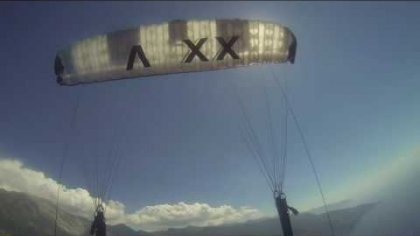
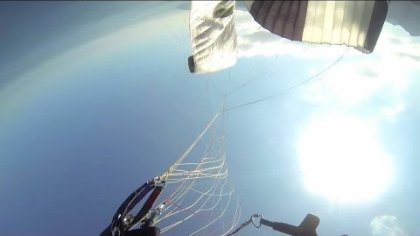


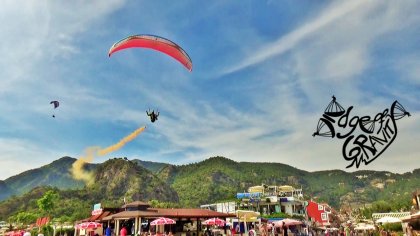
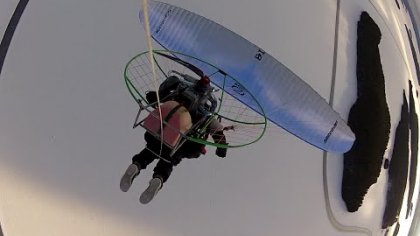
Latest Comments
any luck with the video?
Hi,
This link is broken, can you post the new one, please.
very good!!
good
Pal could you find the vid again,your link is leading to the front page of justarcro,as it were posted in 06 i guess its far away..
Cheers
Hi!
Here you can watch a video of a Wing-Over. Look carefully at the the timing of the maneuvre!
http://justacro.com/index.php?m=21&dl=102
As you can see, he start weight-shifting after passing the highest point and brake on the lowest. If you have already a lot of energy, you can start weight-shifting later, even at the moment you swing back under the canopy. It will result a very high turn.
Good luck!
As far as I know, when making a good wing-over it is important to complete the turn. That implies you have to weightshift when you are at the top of your turn, with the leading edge horizontal/pointing down. If you weightshift too early (before the top/apex), the leading edge is not yet pointing down/horizontal. Doing so, you'll drain energy from the wing when it is in fact still going up and around, so it won't be as effective as when you weightshift at the top/apex.
By the way, when the momentum is going, I hardly use any braking action and don't need to. Good weighshifting is essential though. This will help you to go far over the top (high) but with a hard wing and no collapses.
To be honest, the character of the wing (not the classification) proved me to be a major factor in how easy it does wingovers.
before the apex!
at the lowest point pull the brake real hard, than the WOs will be really high.
to avoid collapses, pay attention on the brakes at the higest point.
cool
When do you weight shift in the Wingover?
Before, at or after the apex?
Some guys say you have to weight shift before the apex and other say you should do it after the apex.
My experience is that when you weight shift before the apex the glider is only a bit rolling but you don't get high Wing Overs (Do I do something wrong?).
When you weight shift after the apex I get at the apex the feeling of being weightless. Because of that it's difficult to weightshift to the outer side. BUT the Wing Overs are higher.
My Problem: I just can do two or three high wing overs then I get problems with collapses because of weight shift timing failures (I think I weight shift too early - maybe at the apex or just before - should I force me to weight shift after the apex? It's in my opinion an unpleasant feeling doing this in high wing overs - maybe because I cannot see my wing?!?).
I think I would fly much better wing overs if I would be shure when to do the weight shift.
What do you think?
Weight shift before the apex or after?
Thanks,
Malte
PS: Sorry for my bad english - It's late (but I think that not depends on the time :-D)